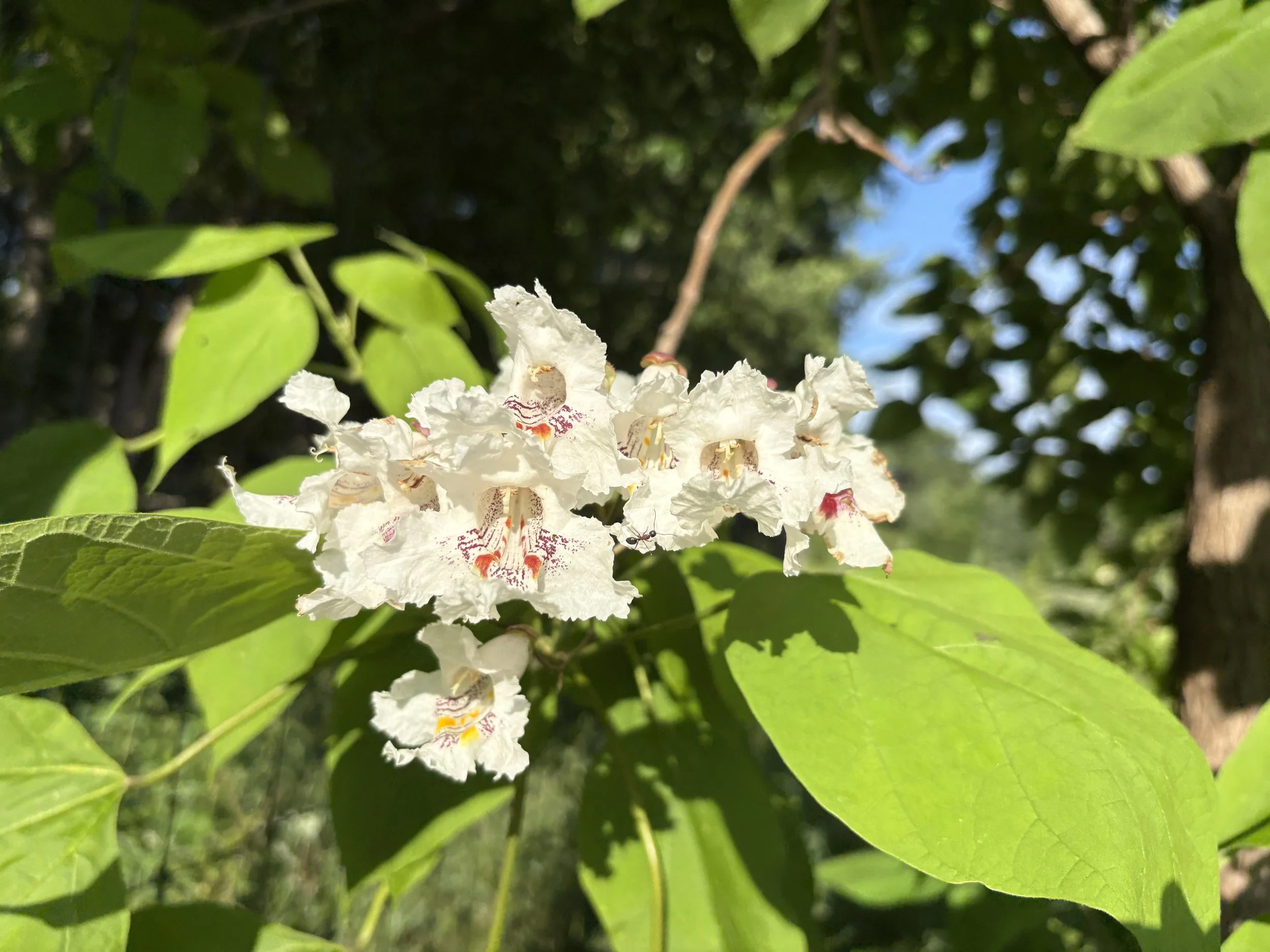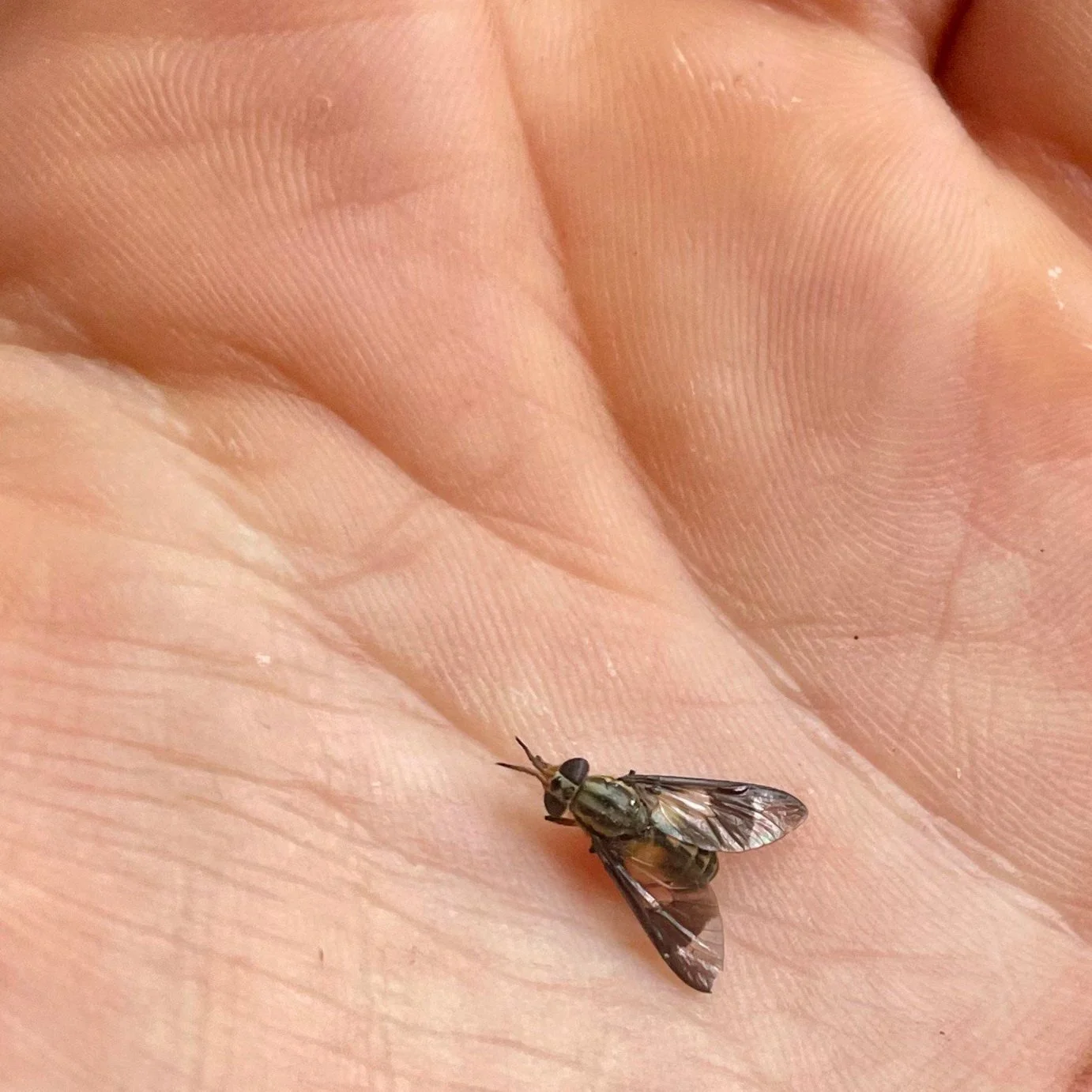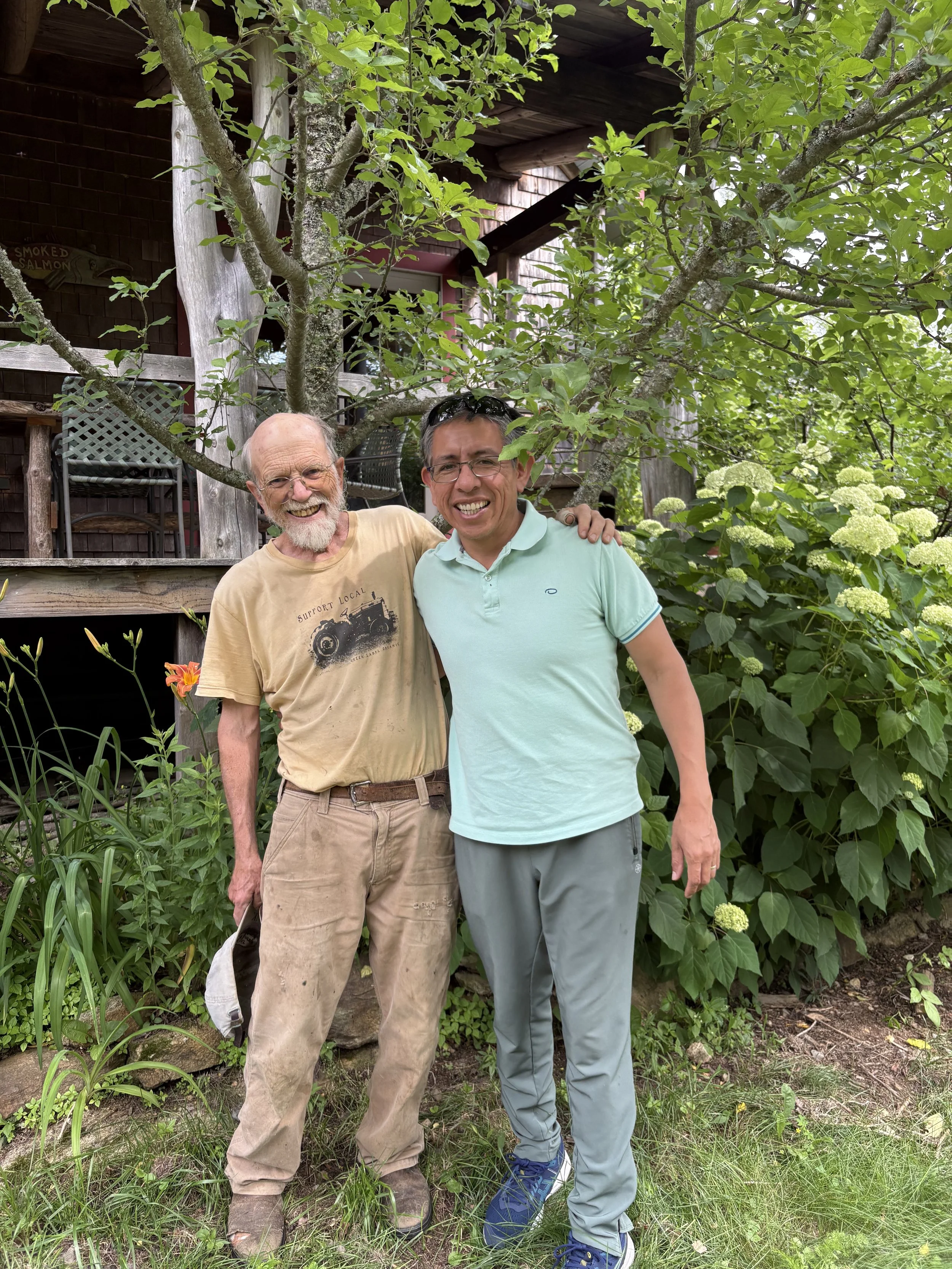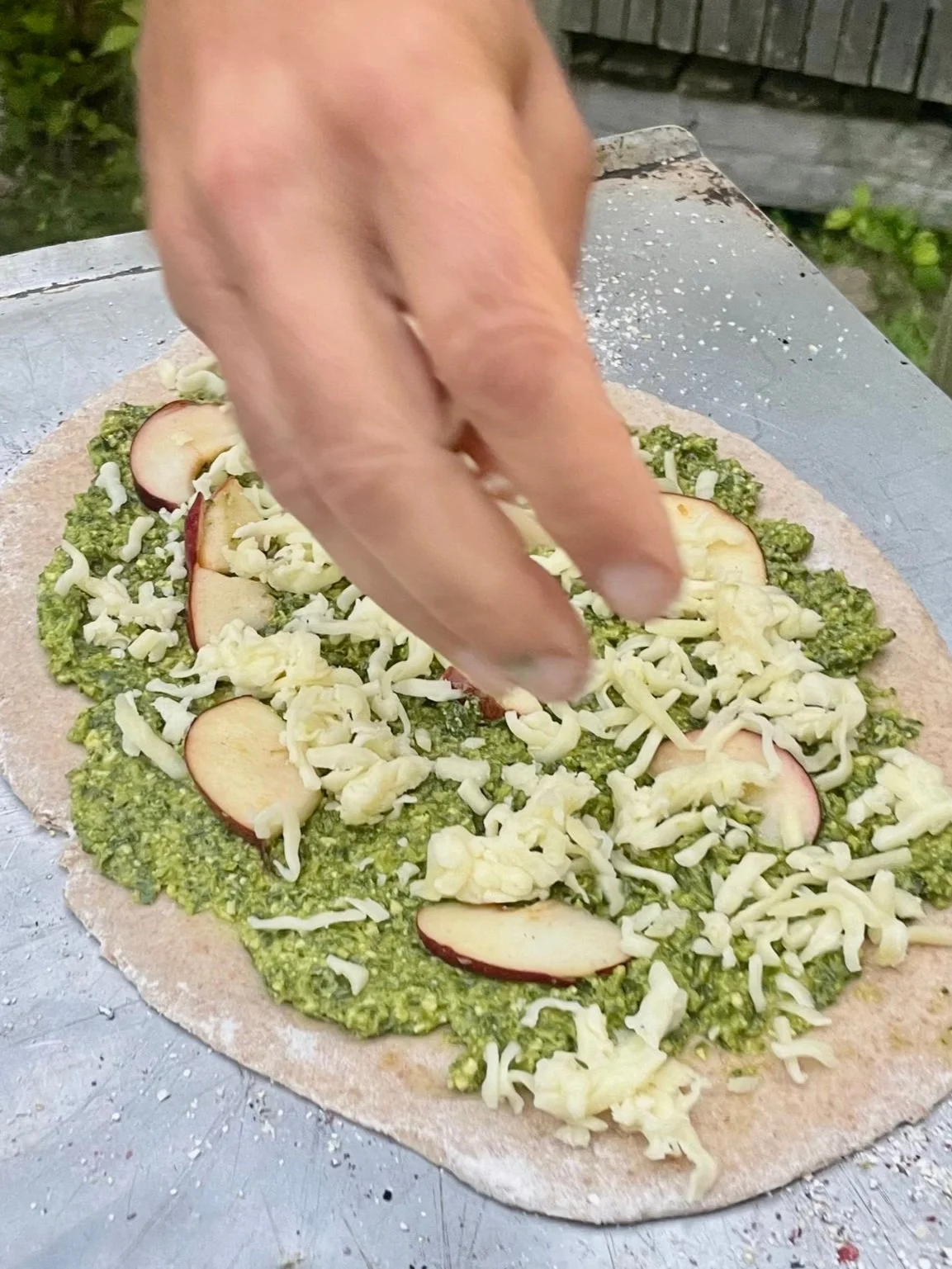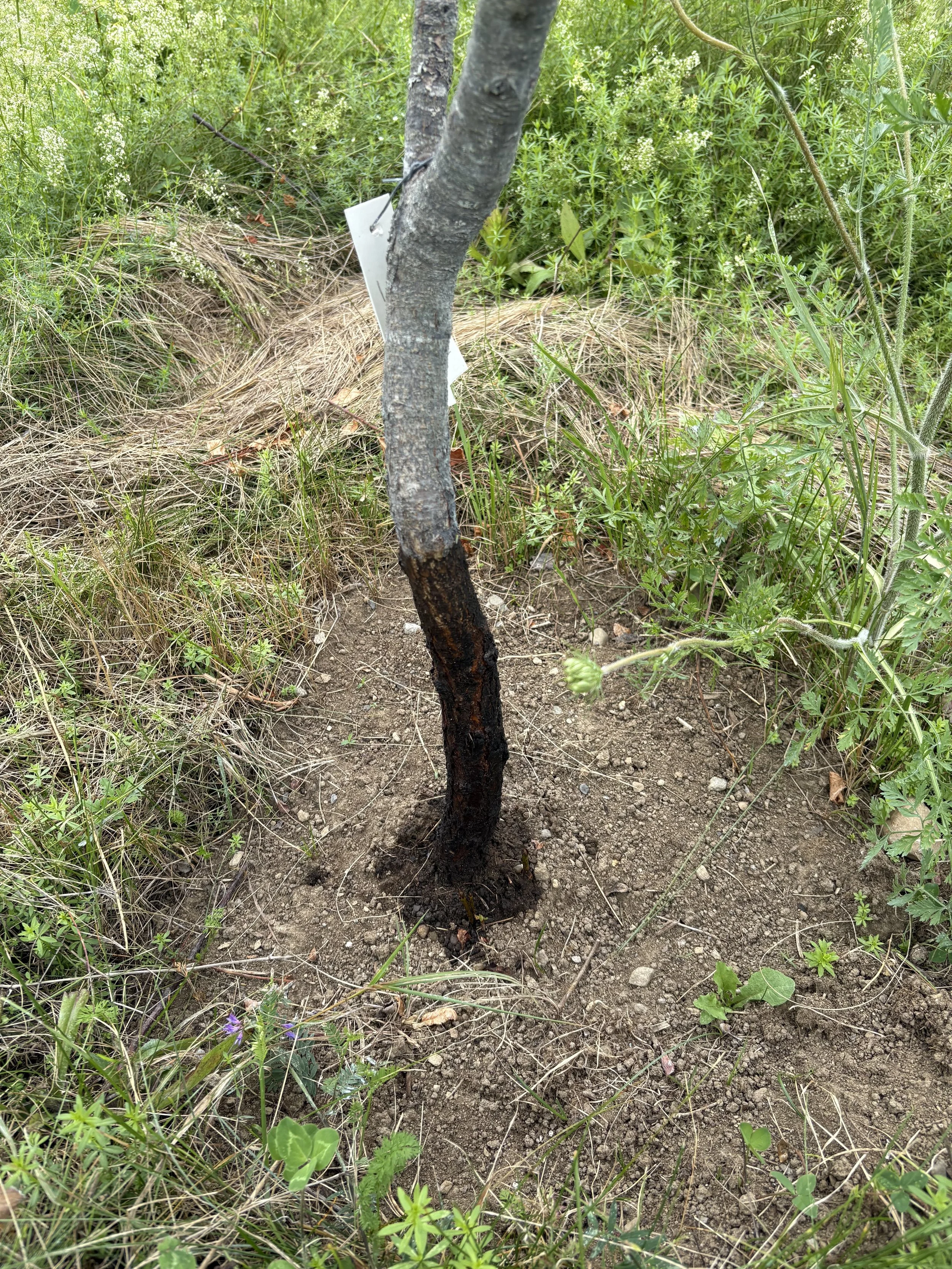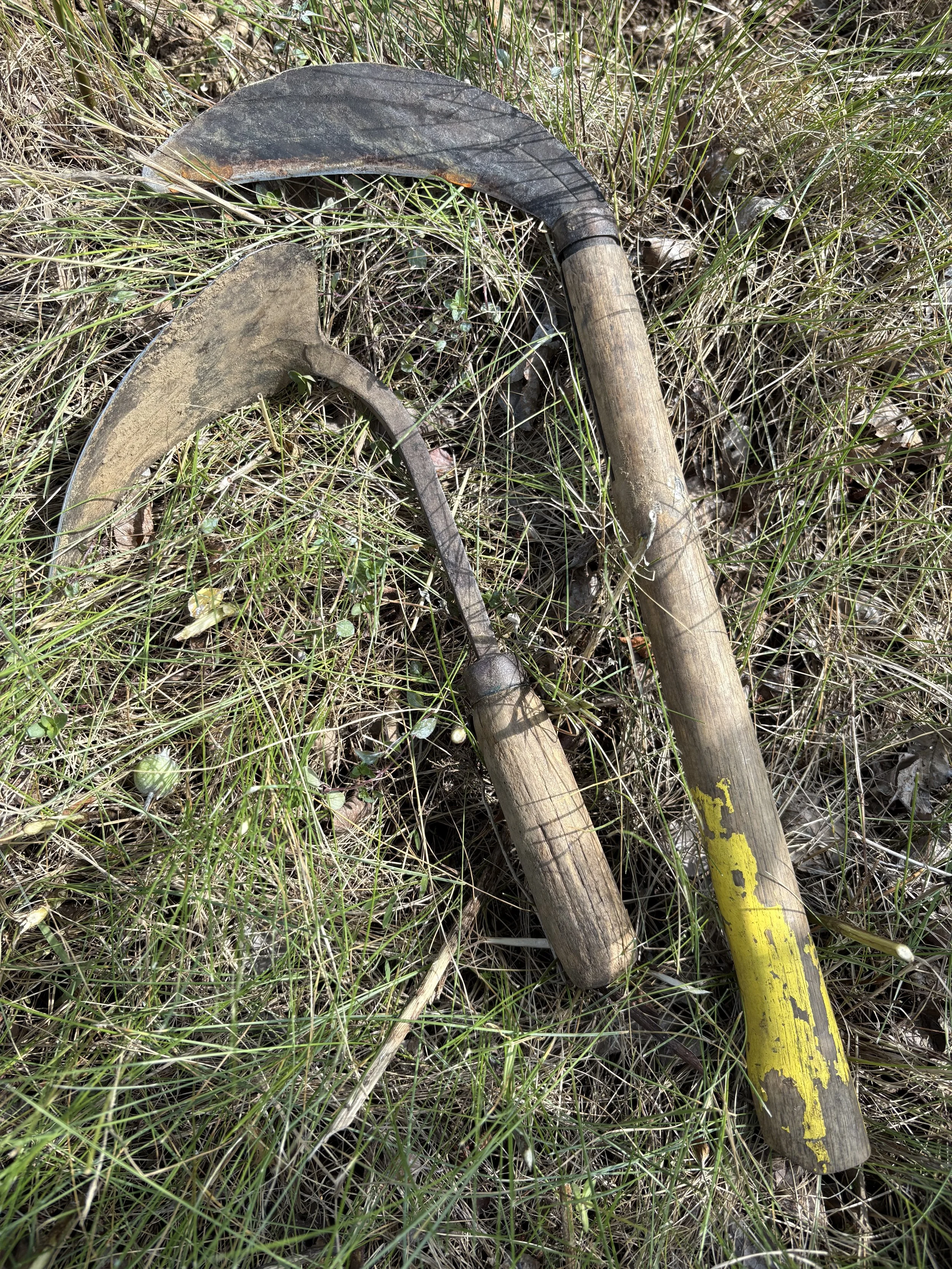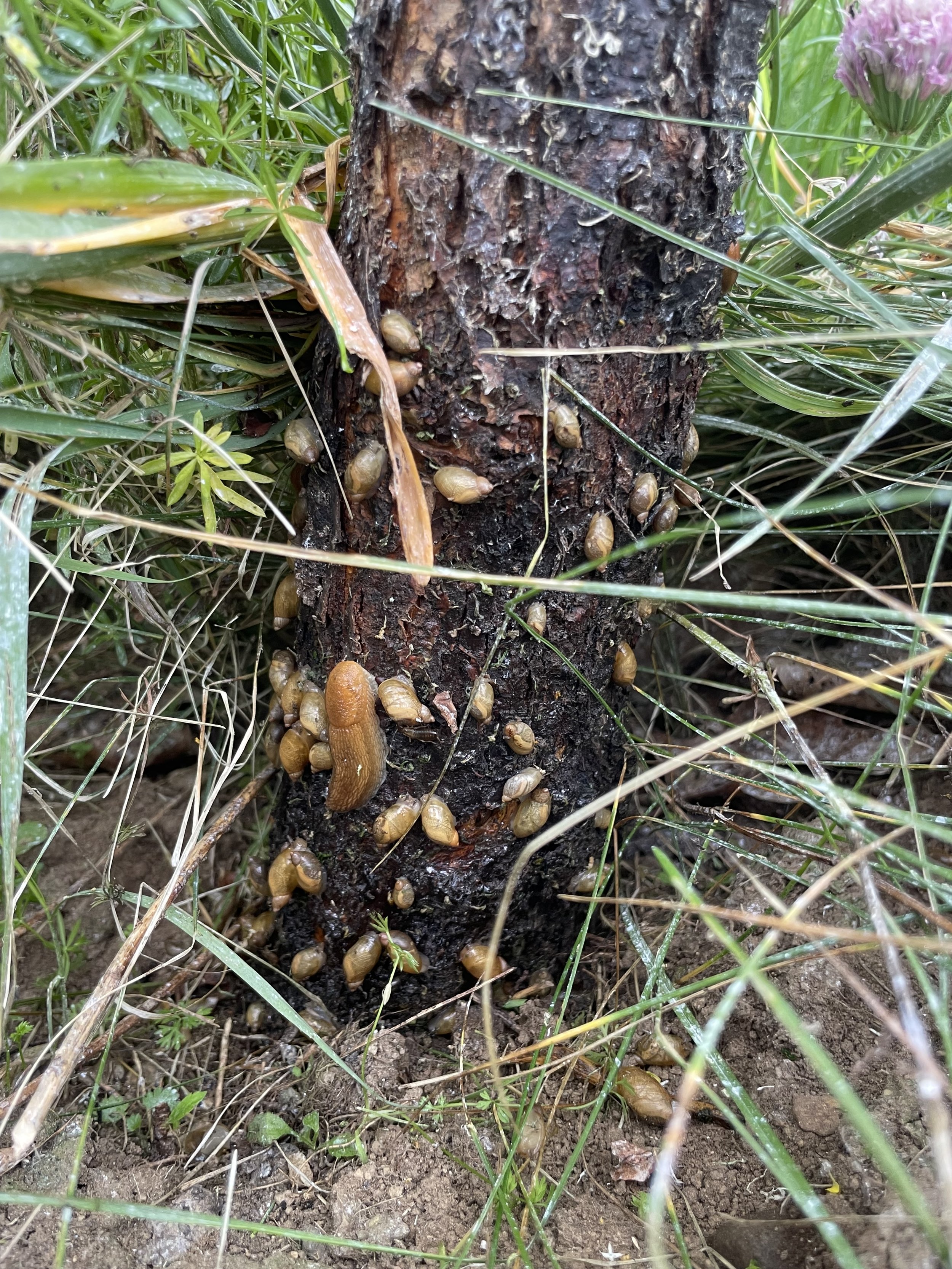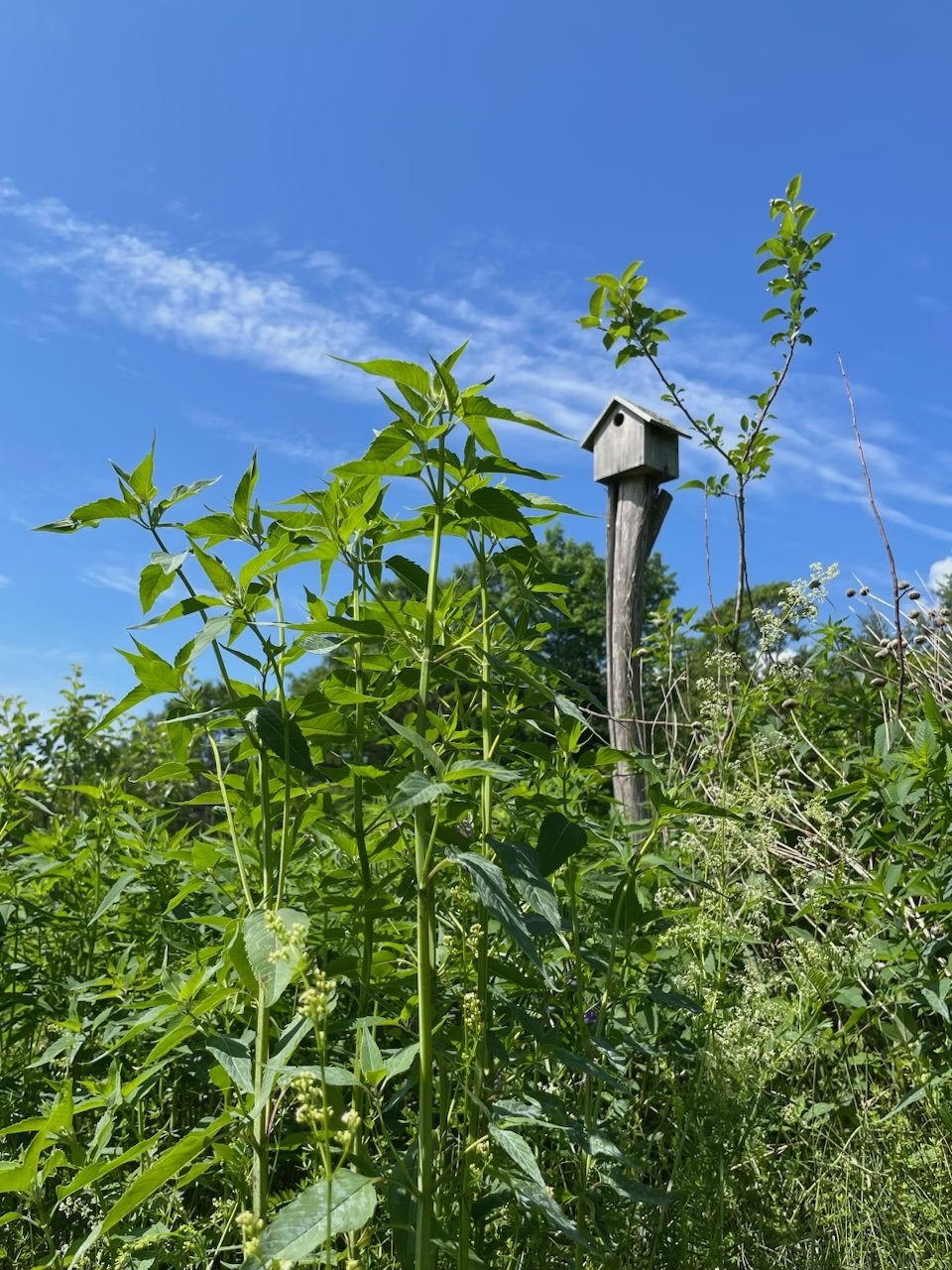(Today’s report by Skylar.) Another productive day in the orchard weeding around the apple trees. There are many hundred trees here, and every one gets a chunk of our energy and care. Sometimes I get into a flow in which I can work faster and more focused than is my standard for a period of time. Today I didn’t “flow” quite enough to completely zone out my surroundings. I was able to pause and admire a few of the birds around me.
One of the birds was a Broad Winged Hawk. I don’t recall many times in my life where I have been closer to a hawk, and she stuck around for a while. Boy was she loud, screeching away. It was pretty clear she is not popular in the orchard. Wherever she went, the Robins and Blue Jays would make a ruckus and quickly get themselves far away. This hawk was behaving oddly. She stood somewhat crooked and didn’t look to be flying properly. Perhaps she is injured. I’ll keep an eye out in the coming days to see if she stays around.
Another wonderful bird of the day: the Common Yellowthroat, both male and female. If it weren’t for their chirping back and forth, I would not have known what species the female Yellowthroat was. She is a fairly muted, yellowish-gray. The male, however, has a bright yellow throat (surprise surprise) as well as a thick, black band that goes right over his eyes.
In the afternoon Laura and I worked for a while on a digital apple project called DIRK. We will have more information about this project in the coming months.

